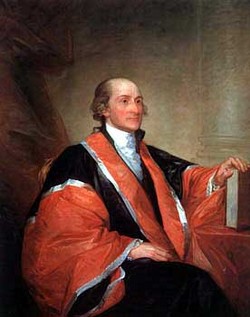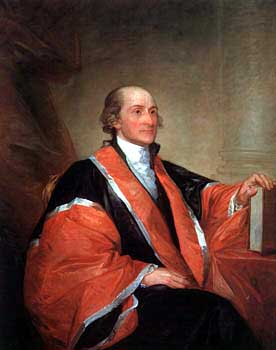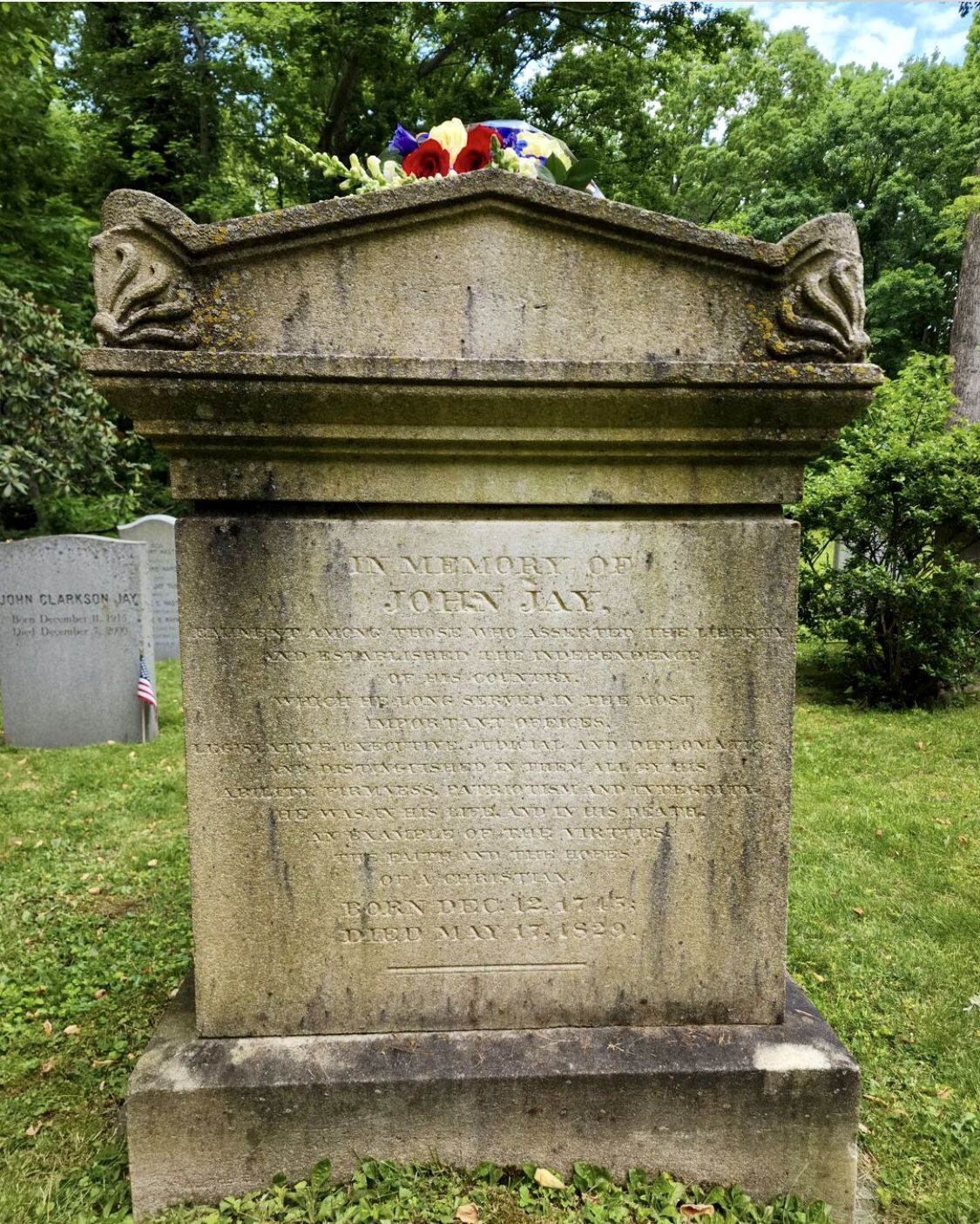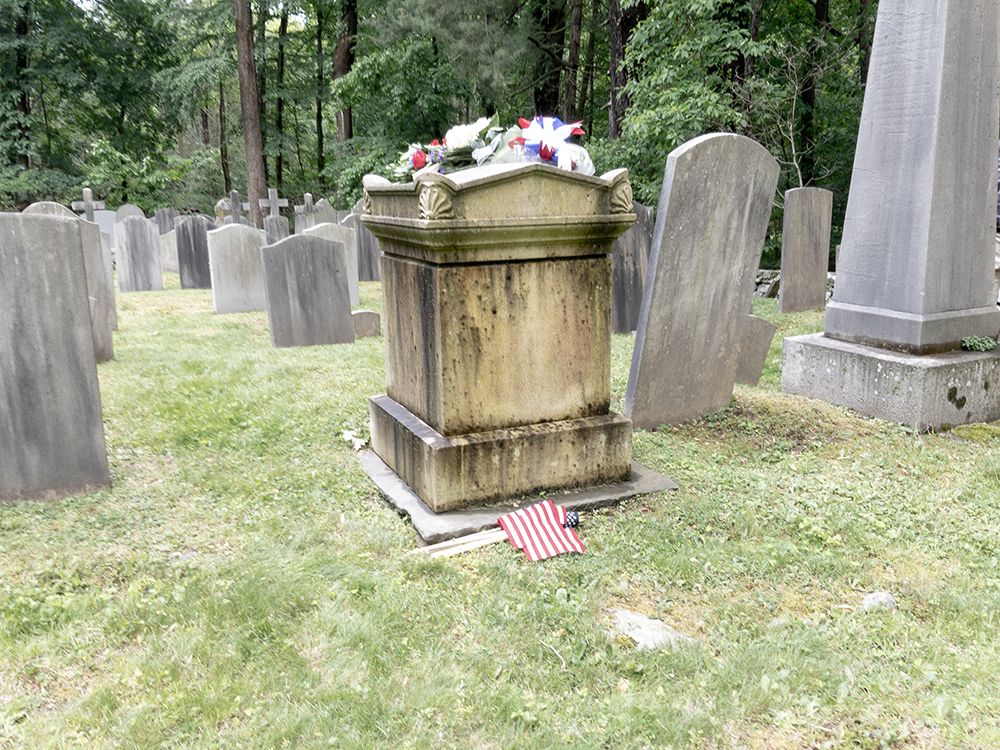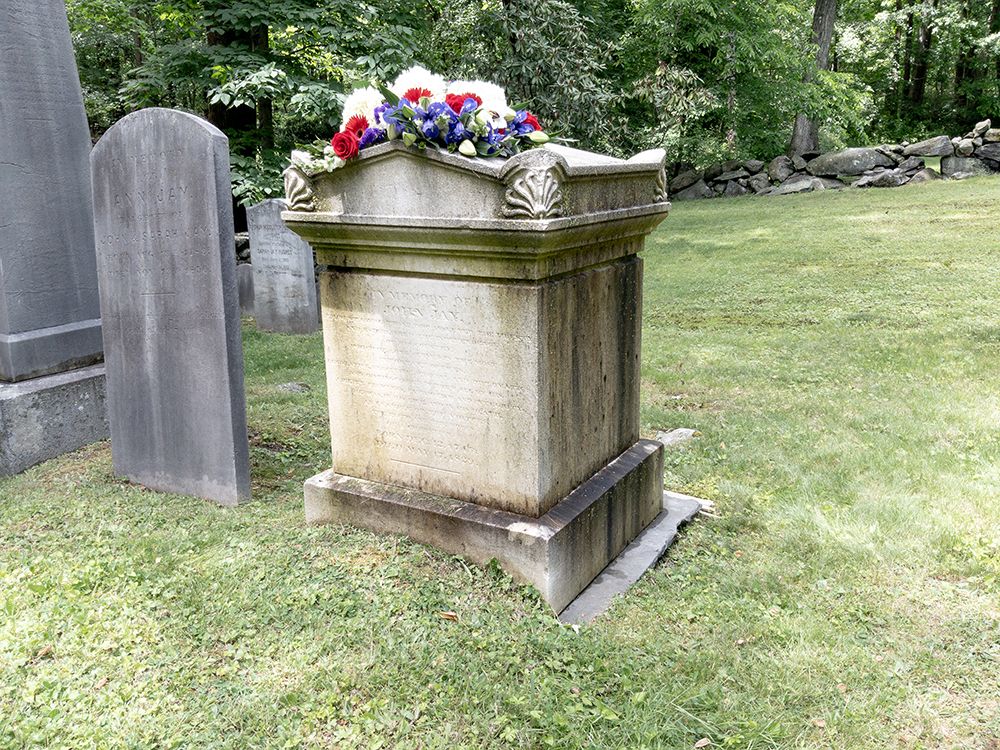Continental Congressman, U.S. Diplomat, United States Supreme Court Chief Justice, New York Governor. He had a quick mind and great diplomatic skill, and was not afraid to make unpopular decisions that would benefit the country as a whole. Born in New York City, he graduated from King's College (now Columbia University) in 1764, having studied law, and was admitted to the New York bar in 1768. He was a delegate from New York at the First and Second Continental Congresses, and although he initially supported reconciliation with Britain, once Independence was declared, he became an ardent supporter of the new nation. From December 1778 to September 1779, he served as President of the Continental Congress, and then became Minister to Spain. At the end of the Revolutionary War in 1783, he, John Adams and Benjamin Franklin negotiated the Treaty of Paris with the British government, which ended the war. From 1784 to 1787, he served as Secretary for Foreign Affairs. With the help of Alexander Hamilton and James Madison, Jay worked to get the Constitution ratified, writing articles for "The Federalist." When General George Washington was made the first President of the United States, Washington appointed him as the first Chief Justice of the Supreme Court. He served as Chief Justice from 1790 to 1795, resigning the position to become Governor of New York state. In 1794, President Washington named him Special Minister to negotiate a treaty with the British, who had failed to live up to the provisions of the Treaty of Paris. The resulting treaty, called the Jay Treaty of 1794, cleared up disputes between the two countries, establishing a joint commission to resolve compensation issues and claims that both countries had. A key American demand was secured, with the British Army abandoning forts along the Upper Mississippi and Ohio Rivers, leaving the United States in control of the entire area east of the Mississippi River. During his tenure as Chief Justice, Jay spent the majority of his time establishing rules, procedures and protocol, many efforts of which are still in use today. He also limited the business of the Supreme Court to ruling on the constitutionality of the cases brought before it, and kept the Supreme Court from assuming governmental powers not specifically granted in the Constitution. His stewardship of the Supreme Court made it a respected and honored institution. When he returned from France having negotiated the Jay Treaty, he found the citizens of New York had elected him their Governor, a post he had not requested. During his two terms as Governor, he improved the business and life of the people in New York, building canals, reforming the prison system (he limited the death penalty, abolished flogging, built new sanitary prisons, and introduced a bill to abolish imprisonment for debt), abolishing slavery in New York State, and leaving the state in a sound financial condition. When his second term as Governor was up in 1801, President John Adams asked him to return as Chief Justice of the Supreme Court. Jay politely refused, and retired from all political life to his home. He spent the last years of his life in comfort, although his health was poor, and in the last two years of his life, he was unable to walk without assistance. He died in 1829 at his home in New York.
Continental Congressman, U.S. Diplomat, United States Supreme Court Chief Justice, New York Governor. He had a quick mind and great diplomatic skill, and was not afraid to make unpopular decisions that would benefit the country as a whole. Born in New York City, he graduated from King's College (now Columbia University) in 1764, having studied law, and was admitted to the New York bar in 1768. He was a delegate from New York at the First and Second Continental Congresses, and although he initially supported reconciliation with Britain, once Independence was declared, he became an ardent supporter of the new nation. From December 1778 to September 1779, he served as President of the Continental Congress, and then became Minister to Spain. At the end of the Revolutionary War in 1783, he, John Adams and Benjamin Franklin negotiated the Treaty of Paris with the British government, which ended the war. From 1784 to 1787, he served as Secretary for Foreign Affairs. With the help of Alexander Hamilton and James Madison, Jay worked to get the Constitution ratified, writing articles for "The Federalist." When General George Washington was made the first President of the United States, Washington appointed him as the first Chief Justice of the Supreme Court. He served as Chief Justice from 1790 to 1795, resigning the position to become Governor of New York state. In 1794, President Washington named him Special Minister to negotiate a treaty with the British, who had failed to live up to the provisions of the Treaty of Paris. The resulting treaty, called the Jay Treaty of 1794, cleared up disputes between the two countries, establishing a joint commission to resolve compensation issues and claims that both countries had. A key American demand was secured, with the British Army abandoning forts along the Upper Mississippi and Ohio Rivers, leaving the United States in control of the entire area east of the Mississippi River. During his tenure as Chief Justice, Jay spent the majority of his time establishing rules, procedures and protocol, many efforts of which are still in use today. He also limited the business of the Supreme Court to ruling on the constitutionality of the cases brought before it, and kept the Supreme Court from assuming governmental powers not specifically granted in the Constitution. His stewardship of the Supreme Court made it a respected and honored institution. When he returned from France having negotiated the Jay Treaty, he found the citizens of New York had elected him their Governor, a post he had not requested. During his two terms as Governor, he improved the business and life of the people in New York, building canals, reforming the prison system (he limited the death penalty, abolished flogging, built new sanitary prisons, and introduced a bill to abolish imprisonment for debt), abolishing slavery in New York State, and leaving the state in a sound financial condition. When his second term as Governor was up in 1801, President John Adams asked him to return as Chief Justice of the Supreme Court. Jay politely refused, and retired from all political life to his home. He spent the last years of his life in comfort, although his health was poor, and in the last two years of his life, he was unable to walk without assistance. He died in 1829 at his home in New York.
Bio by: Kit and Morgan Benson
Inscription
IN MEMORY OF JOHN JAY
EMINENT AMONG THOSE WHO ASSERTED THE LIBERTY
AND ESTABLISHED THE INDEPENDENCE
OF HIS COUNTRY,
WHICH HE LONG SERVED IN THE MOST
IMPORTANT OFFICES,
LEGISLATIVE, EXECUTIVE, JUDICIAL, AND DIPLOMATIC,
AND DISTINGUISHED IN THEM ALL BY HIS
ABILITY, FIRMNESS, PATRIOTISM, AND INTEGRITY.
HE WAS IN HIS LIFE AND IN HS DEATH
AN EXAMPLE OF THE VIRTUES,
THE FAITH AND THE HOPES
OF A CHRISTIAN
Family Members
Advertisement
See more Jay memorials in:
Records on Ancestry
Advertisement
